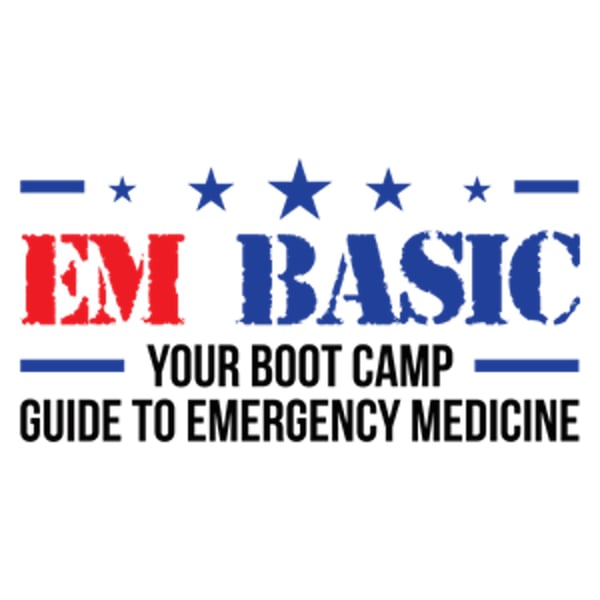Febrile Seizures
EM Basic
EM Basic LLC
4.6 • 665 Ratings
🗓️ 1 December 2014
⏱️ 31 minutes
🧾️ Download transcript
Summary
In this episode we are going to talk about febrile seizures. We see this chief complaint a lot in the ED so it's important that we know this topic really well. Today's script was written by Dr. Andrea Sarchi and will review how to do a good history and physical, how to rule out serious pathology without overtesting, and how to talk with parents. While simple febrile seizures don't cause any harm to the child, they are very scary for parents so it's important that we know the facts so we can re-assure them and prevent future worry.
Transcript
Click on a timestamp to play from that location
| 0:00.0 | This is Steve Carroll, and you're listening to the E.M. Basic podcast. In this episode, |
| 0:05.2 | we're going to be talking about febrile seizures. These are seizures that most commonly occur in children |
| 0:10.0 | between the ages of six months and six years, and they're the most common type of seizure in infants |
| 0:15.5 | and young children. While febrile seizures usually have a benign course and a good prognosis, they can occasionally persist into febrile status epilepticus, and this is a condition that we must be prepared to treat. |
| 0:28.3 | In addition, it's important that we rule out life-threatening causes of seizure with fever in all children that present to the emergency department. |
| 0:36.1 | This episode was written by Dr. Andrea Sarci, |
| 0:38.9 | under the supervision and direction of Dr. Michael Pasifaro, |
| 0:42.5 | an EM attending is affiliated with the NYIT College of Oisipath of Medicine. |
| 0:47.3 | As always, this episode is an officer of the views of the Penning's Department of Defense, |
| 0:50.0 | the U.S. Army, the U.S. Air Force, the Shoshchek EM Residency Program, |
| 0:53.1 | or the NYIT College of O, the U.S. Air Force, the Shoshchek-E. Emeritus program, or the NYIT College of |
| 0:54.4 | Hyacepath Medicine. Before we get into the history and patient evaluation, let's talk about the |
| 0:59.2 | definition of a febrile seizure. A febrile seizure is defined as a convulsion associated with an |
| 1:04.4 | increased temperature above 38 degrees Celsius in a child between three months and six years old, with the absence of a CNS |
| 1:12.4 | infection or inflammation that may be causing the fever and seizure, no history of previous |
| 1:18.2 | afebrile seizures, and no acute systemic metabolic abnormalities that may produce convulsions. |
| 1:24.5 | To simplify that statement, a febrile seizure is a child between three months and six years old, |
| 1:29.9 | who has a fever, no history of diagnosed epilepsy, who has had a seizure, but does not have any |
| 1:36.1 | other serious cause for the seizure, like meningitis or electrolyte abnormalities. |
| 1:41.3 | Febrile seizures are further broken down into two groups, simple and complex. Simple febrile seizures |
| 1:47.4 | are the most common and account for 75% of fall of febrile seizures. Simple fibral seizures last for |
| 1:53.9 | less than 15 minutes, and they don't have any focal features. On the other hand, complex febrile |
... |
Please login to see the full transcript.
Disclaimer: The podcast and artwork embedded on this page are from EM Basic LLC, and are the property of its owner and not affiliated with or endorsed by Tapesearch.
Generated transcripts are the property of EM Basic LLC and are distributed freely under the Fair Use doctrine. Transcripts generated by Tapesearch are not guaranteed to be accurate.
Copyright © Tapesearch 2025.

